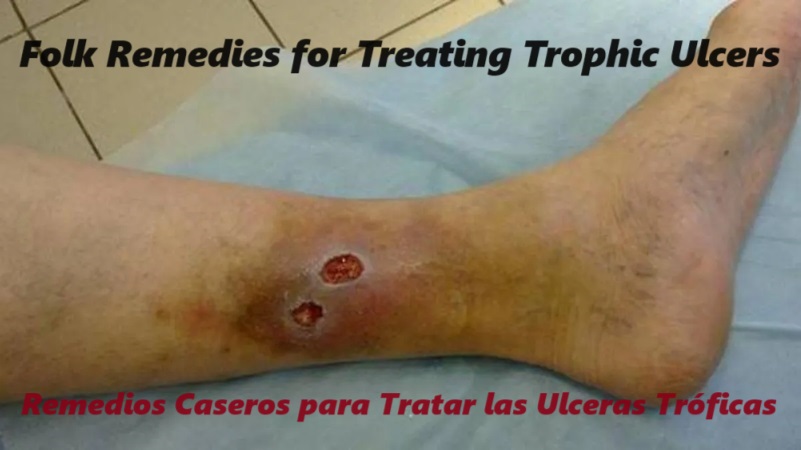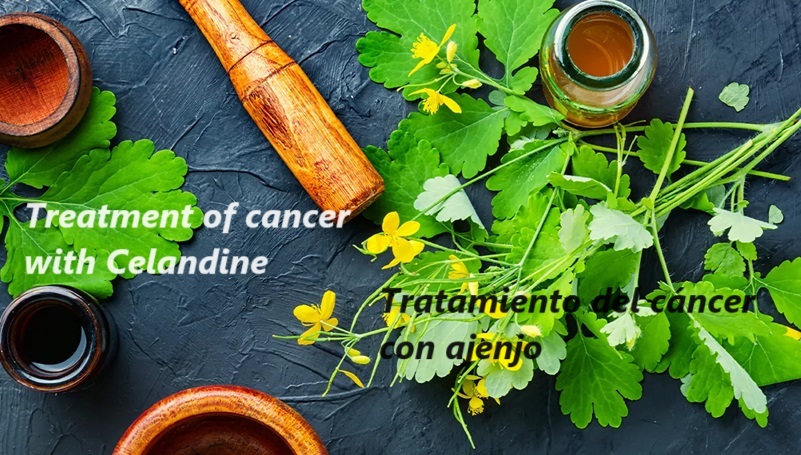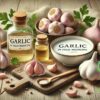It has been known for quite a long time (at least several decades) that treating trophic ulcers with folk remedies can be much more effective than using the latest methods of official medicine. Of course, there won’t be an instant effect of such treatment, but there is a possibility to prevent the appearance of scars. After all, it’s worst if your shins or ankles end up covered in scars and marks when using “quick” methods. Let’s see how this can be avoided.
Folk remedies for treating trophic ulcers
The main methods of such treatment include various ointments, baths, and compresses, as well as bandages soaked or smeared with a healing composition. Let’s consider the most effective recipes developed and tested by repeated experience.
Using healing bandages
To prepare such a bandage, mix honey and egg white in a 1:1 ratio. Then beat the resulting mixture and apply it to the skin affected by ulcers. This recipe is considered particularly relevant for varicose veins, as the mixture can also be applied to affected veins.
Then layer burdock leaves over the ointment in three layers. Wrap the affected area with plastic wrap and bandage it with a cloth. You can leave this compress overnight or for any extended period. Perform the procedure at least seven times. It has been proven that treating trophic ulcers on the lower limbs is very effective if done correctly. Usually, after the treatment course, instead of ulcers, there are barely noticeable pink spots on the skin. There is no need to touch or further treat them: they will disappear on their own in about two weeks.
Egg yolk ointment for trophic ulcers
It is commonly believed that only the initial stage of trophic ulcers can be easily treated. However, with the help of this ointment, even advanced ulcers can be healed, leaving no scars behind. The key is to carefully follow the proportions.
Take fresh chicken yolks and put them in a separate container using a teaspoon. Then, in a 1:1 ratio, add a 5% iodine solution. Stir the ointment until you get a homogeneous dark yellow mass. Store in a dark place at room temperature.
Carefully apply the ointment to the wound with a teaspoon. However, be careful not to get it on healthy skin! The area affected by the trophic ulcer should be evenly covered with the ointment, then apply a clean cloth over it and bandage it. Change the dressings every 12 hours. As practice shows, in this case, treatment of trophic ulcers with folk remedies not only passes very effectively but also as painlessly as possible and without any unpleasant consequences such as scars.
Healing baths for trophic ulcers
Baths will be especially effective if treatment for trophic ulcers on the legs is needed. To do this, dilute potassium permanganate in water to a dark pink shade and keep the trophic ulcer there for about half an hour, then add a calendula flower tincture at the rate of 100 ml per liter of water (you can buy such a mixture at the pharmacy).
The skin with the trophic ulcer should also be kept in the bath for half an hour. Then, dilute eucalyptus oil in clean water and keep the skin with the ulcer there twice more for half an hour. Then, wrap the ulcer with a clean bandage folded several times. The ulcer will completely disappear after 3-4 such treatment courses.
Using vegetable-oil ointment for trophic ulcers
This recipe is effective because it can be used even in diabetes since it does not contain any components that disrupt the body’s balance. You will need:
• 1 onion,
• 1 carrot,
• half a cup of unrefined sunflower oil.
Peel and finely chop the onion, then grate the carrot and add it to the onion. Fry the mixture over low heat using all the sunflower oil. Squeeze the resulting golden-colored mixture and apply it to the areas with ulcers in the form of compresses. Repeat this healing procedure at least 3 times a day. This will allow you to heal from ulcers quickly within a very short period.
Golden mustache for trophic ulcers
Rinse a golden mustache leaf in water and tear it into pieces about a centimeter each. Then place the pieces in an enamel container and crush them with a wooden spoon or mortar. Spread the mixture on the ulcer and cover it with clean gauze. Then place a cloth on top and bandage it well.
This procedure should be done several times before bedtime. Note that golden mustache can sometimes cause severe pain! However, it is one of the most effective methods among all known. It will help you quickly heal from trophic ulcers and ensure that no trace of them remains.
Cabbage leaf for trophic ulcers
Moisten a cabbage leaf with sea buckthorn oil and apply it to the affected areas of the skin. The recipe is quite simple – you don’t have to do anything else, just wait. In one day, the leaf will completely dry out and resemble paper. Remove it and apply a new one. Repeat this procedure until the ulcers disappear.
If trophic ulcers are combined with venous nodes and mesh, you can moisten the cabbage leaf with brine to soften it, then put it in a plastic bag and refrigerate it for a day. Then drip apple cider vinegar onto the problem areas of the skin, place the cabbage leaf on top, and bandage it well.
It is better to do this at night and remove it in the morning. Repeat this procedure for several days. To avoid interruptions, you can prepare several leaves in advance. Within a week, you will notice a decrease in pain and a feeling of lightness.
Universal healing ointment
Some consider this ointment not just a folk remedy for treating trophic ulcers but rather a kind of miraculous panacea – due to its wide range of diseases it helps with. Although, of course, the matter here is only in the combination of components. And they are as follows:
• 1 cup of refined oil,
• beeswax (volume approximately the size of a matchbox),
• chicken egg.
Pour the oil into an enamel container, add the beeswax, and heat over low heat until melted. Boil the egg hard, separate the yolk. For each portion of ointment, use half a yolk and add it to the mixture in small portions. Stir, remove from heat, and let it infuse for up to 15 minutes. Strain through nylon fabric to remove any excess. Store such an ointment in a glass container in the refrigerator, but before use, heat it to about 40 degrees Celsius. This is a very effective remedy against ulcers.
Conclusion
As you can easily see, folk remedies for treating trophic ulcers on different areas are very effective. Moreover, their preparation is not particularly difficult, and they are almost all painless. Before thinking about using chemical preparations developed by the medical industry, you can always use folk remedies, which have far fewer contraindications – or have none at all. Undoubtedly, you will be very pleased with the prospect of getting rid of trophic ulcers on any area of the skin easily and without unnecessary costs and problems.







